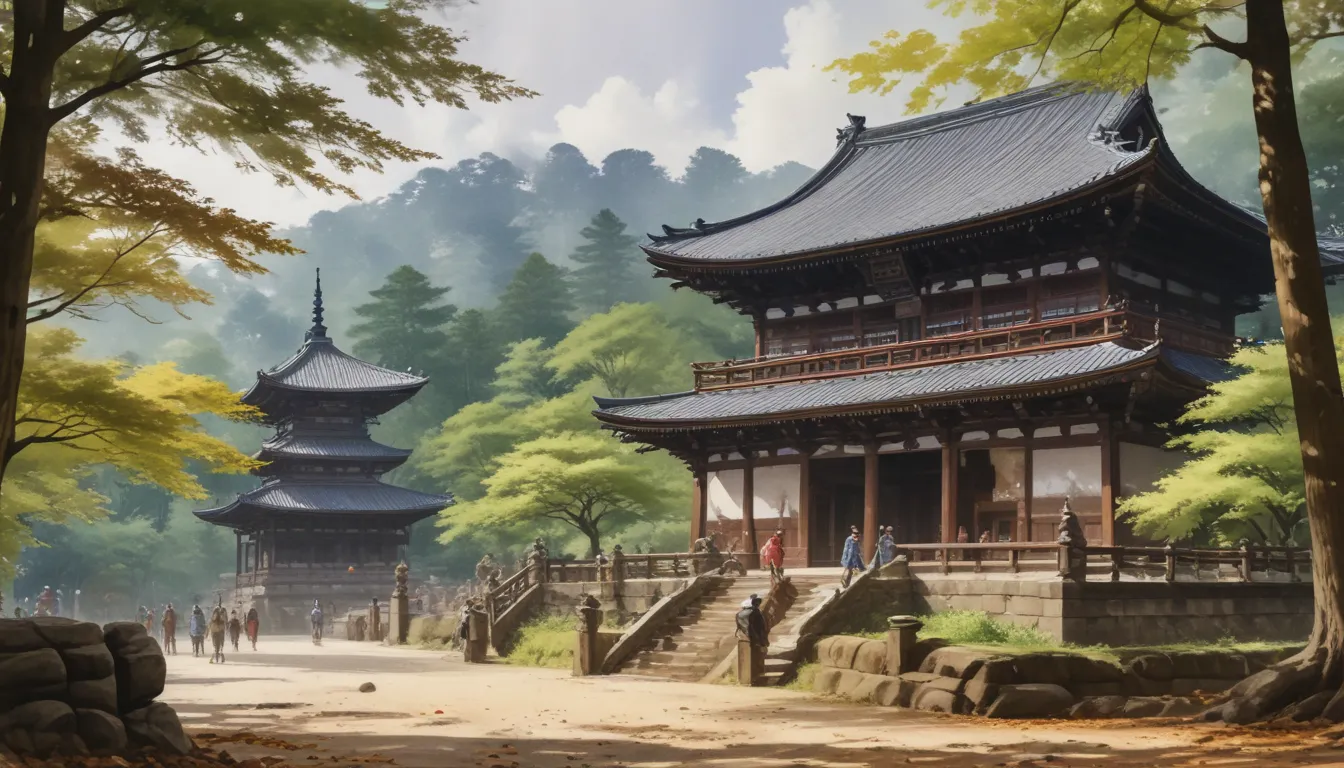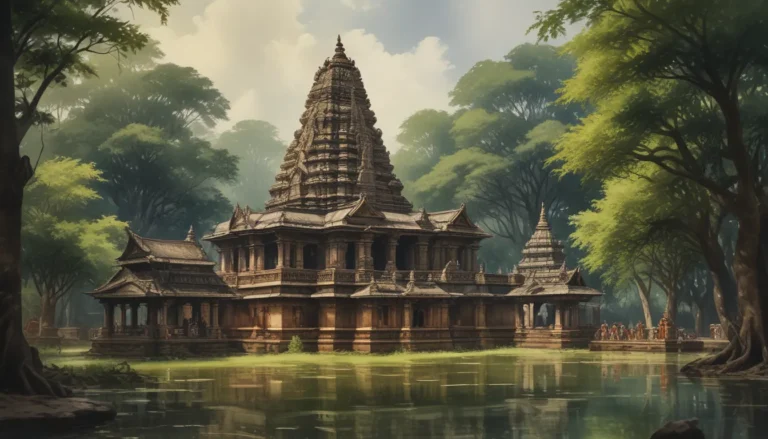The images in our articles are for illustrative purposes only and may not exactly match the content. They are intended to capture your interest and complement the text, not to replace it.
Are you intrigued by ancient landmarks that are steeped in history and culture? If so, Todai-ji temple in Nara, Japan, is guaranteed to capture your imagination. This Buddhist temple, dating back to the 8th century, stands as a UNESCO World Heritage site and boasts a myriad of exceptional facts that make it a truly extraordinary destination. From its colossal bronze Buddha statue to its status as one of the oldest wooden structures in the world, Todai-ji is a testament to the ingenuity and skill of its creators. Join us on a journey through time as we uncover 13 remarkable facts about this iconic landmark, shedding light on its historical significance and architectural wonders.
Delving into the History of Todai-ji
Located in Nara, Japan, Todai-ji is a revered Buddhist temple complex that holds immense historical and cultural value. Originally built in the 8th century, it has become one of Japan’s most iconic landmarks, attracting visitors from far and wide.
Unveiling the Great Buddha Statue
One of Todai-ji’s most renowned features is its monumental bronze Buddha statue, known as the Daibutsu. Towering at a height of over 15 meters, this statue symbolizes peace, compassion, and enlightenment, captivating all who lay eyes on it.
Exploring the Enormous Wooden Hall
Step inside the main hall of Todai-ji, the Daibutsuden, and behold one of the largest wooden structures in the world. Constructed using traditional Japanese techniques and materials, this architectural marvel can accommodate thousands of people and houses the magnificent Great Buddha.
Embracing the Presence of Sacred Deer
Todai-ji is not only home to spiritual wonders but also to a population of Sika deer, revered as sacred beings in Japanese culture. These gentle creatures roam freely on the temple grounds, cherished as national treasures by visitors who enjoy interacting with them.
Witnessing the Majesty of the Nandaimon Gate
Upon entering Todai-ji, you are welcomed by the grandeur of the Nandaimon Gate, a monumental structure standing at a height of 25 meters. Guarded by fierce statues of Niō, the two heavenly kings, this gate evokes a sense of reverence and awe as you make your way into the temple.
Honoring the Seven Lucky Deities
Within Todai-ji lies a special area dedicated to the Seven Lucky Gods, known as Shichifukujin. Believed to bestow good fortune and blessings upon worshippers, these deities offer an opportunity for visitors to pay their respects and seek various blessings in life.
Experiencing the Annual Omizutori Ritual
Mark your calendar for March, the month when Todai-ji hosts the Omizutori ritual, a cherished tradition in Japanese Buddhism. During this event, Buddhist monks partake in sacred ceremonies, including a water-drawing ritual and a grand fire ceremony, to purify the temple and usher in good luck for the coming year.
Discovering the Treasures of Todai-ji
Journey through Todai-ji’s halls and marvel at its vast collection of Buddhist art and artifacts, including national treasures and cultural relics. From ancient statues to intricate paintings and scriptures, these treasures offer invaluable insights into Japan’s rich history and artistic legacy.
Venturing into the Underground World
Unlock the secrets of Todai-ji by exploring the mysterious Shosoin Treasure House, a hidden chamber beneath the temple that safeguards a treasure trove of historical artifacts. Witness ancient textiles, calligraphy, and other precious objects that are opened to the public on rare occasions, providing a glimpse into the past.
Reveling in the Cherry Blossom Spectacle
In spring, Todai-ji adorns itself with blooming cherry blossoms, creating a picturesque setting that attracts visitors from across the globe. Witness the harmonious blend of nature and architecture as you immerse yourself in this breathtaking spectacle of beauty.
Seeking Healing in Nigatsu-do
Escape to the tranquil Nigatsu-do hall, nestled on the hillside behind Todai-ji, where panoramic views of Nara offer solace and serenity. Many visitors flock to this serene spot to pray for well-being and healing, believing in the transformative power of their prayers.
Embracing the Influence of Todai-ji
Throughout the centuries, Todai-ji has played a pivotal role in shaping Japanese Buddhism and culture, serving as a hub for religious teachings, artistic expression, and education. Its enduring legacy continues to inspire and draw visitors seeking spiritual enlightenment and a deeper appreciation of Japan’s cultural heritage.
Upholding the Spirit of Todai-ji
Preserving the historical and cultural essence of Todai-ji is a continuous endeavor, ensuring that future generations can bask in the awe-inspiring beauty and spiritual ambiance that the temple exudes. Through meticulous maintenance and dedication, the spirit of Todai-ji lives on, inviting new generations to experience its grandeur.
Conclusion: A Landmark of Awe and Wonder
Todai-ji stands as a beacon of history, artistry, and spirituality, captivating visitors with its rich tapestry of facts and wonders. From the majestic Great Buddha to the charming presence of sacred deer, this iconic temple leaves a lasting impression on all who visit. Whether you’re a history buff, an architecture enthusiast, or simply drawn to Japanese culture, a pilgrimage to Todai-ji promises an unforgettable experience.
As one of Japan’s most significant cultural sites, Todai-ji embodies the nation’s profound religious heritage and enduring faith. Its splendor and allure continue to enthrall visitors from around the world, beckoning them to witness the craftsmanship and spiritual significance that define this extraordinary landmark. If you ever find yourself in Nara, make sure to include Todai-ji on your itinerary for a journey of discovery and wonder.
FAQs
Q: When was Todai-ji built?
A: Todai-ji was founded in the year 752 AD during the Nara Period, making it over 1,200 years old.
Q: How tall is the Great Buddha of Todai-ji?
A: The Great Buddha of Todai-ji stands at an impressive height of approximately 15 meters (49 feet), making it one of the largest bronze Buddha statues in the world.
Q: What is unique about Todai-ji’s architecture?
A: Todai-ji’s main hall, Daibutsuden, is renowned as the world’s largest wooden building, showcasing remarkable architectural techniques that have withstood the test of time.
Q: Are there deer in Todai-ji?
A: Yes, Todai-ji is surrounded by the serene Nara Park, where Sika deer roam freely as sacred messengers, beloved by visitors for their gentle nature.
Q: Can visitors enter the Great Buddha Hall?
A: Absolutely! Visitors are welcome to enter the Great Buddha Hall and marvel at the magnificent statue up close, a truly awe-inspiring experience for all.
Embark on a journey through the wonders of Todai-ji, where history, culture, and spirituality converge to create an unforgettable experience. Explore the ancient capital of Nara, home to this remarkable temple and other cultural marvels waiting to be discovered. For those eager to delve deeper into the teachings and philosophies that define Todai-ji, our Buddhism facts offer a window into the spiritual realm. And if you’re keen on exploring more awe-inspiring World Heritage Sites, don’t miss our astonishing facts about Fatehpur Sikri in India. Let your curiosity guide you as you uncover the marvels that have shaped human history and left an indelible mark on the world.
A Note from Us:
Our commitment to delivering engaging, authentic content drives us to ensure each fact we share is meticulously reviewed and contributed by real users like you. Our dedication to accuracy and credibility guarantees that the information you discover with us is not only captivating but also reliable. Trust in our pursuit of quality and authenticity as you embark on a journey of exploration and learning with us.






